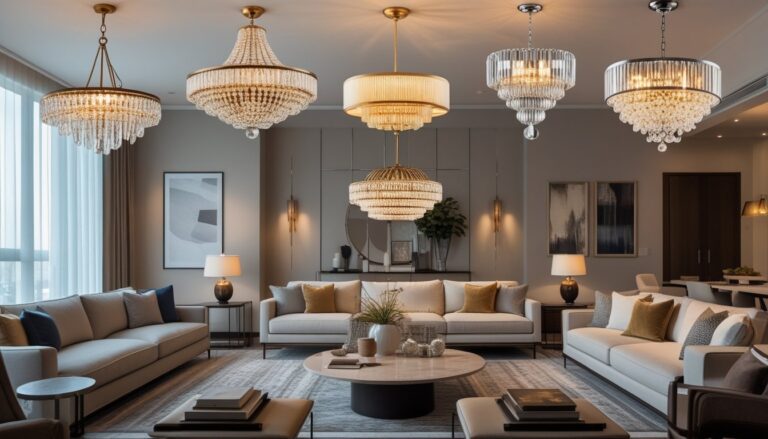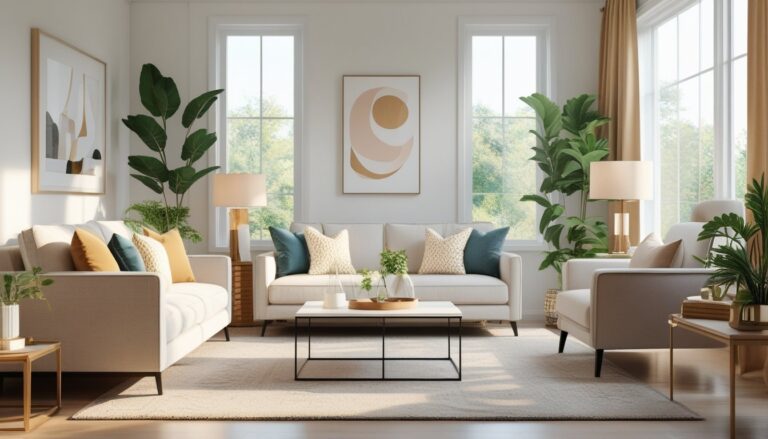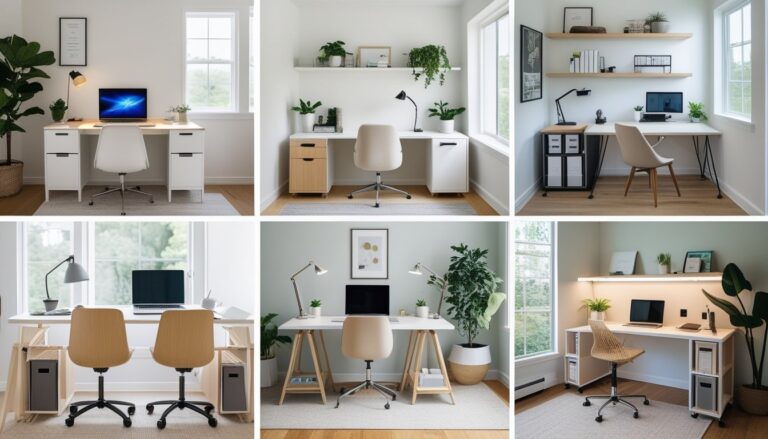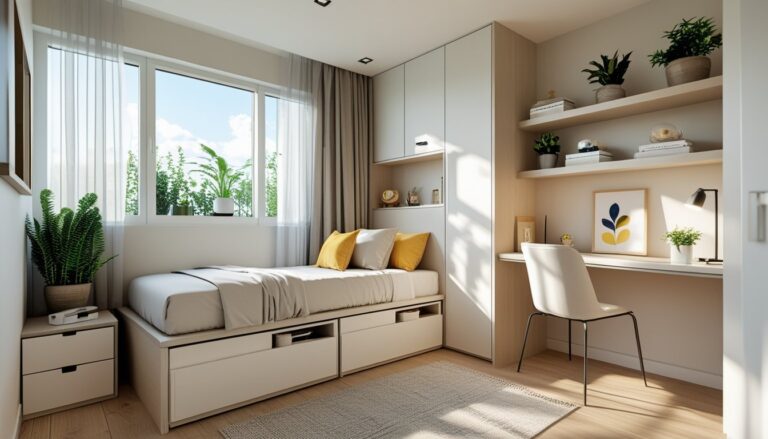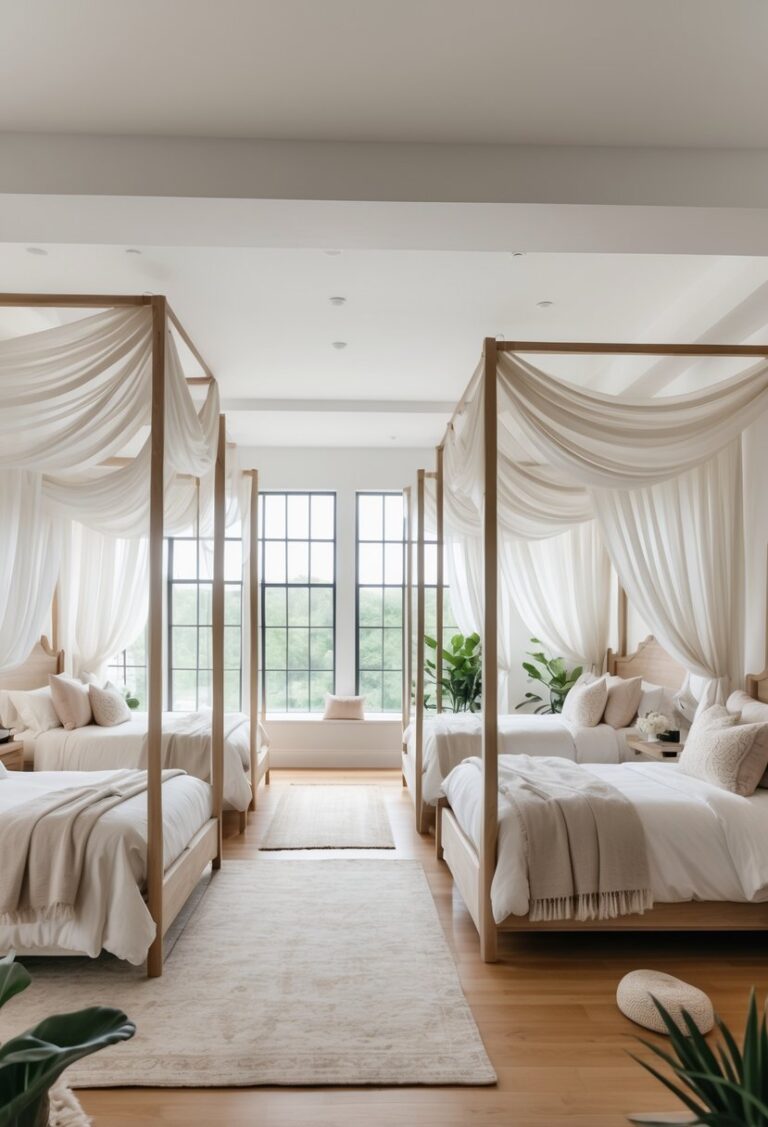7 Living Room Designs for an Apartment to Enhance Space and Aesthetic
Living room design in an apartment often requires careful planning to make the most of limited space. It is important to create a comfortable and stylish area that suits daily living without overcrowding the room.
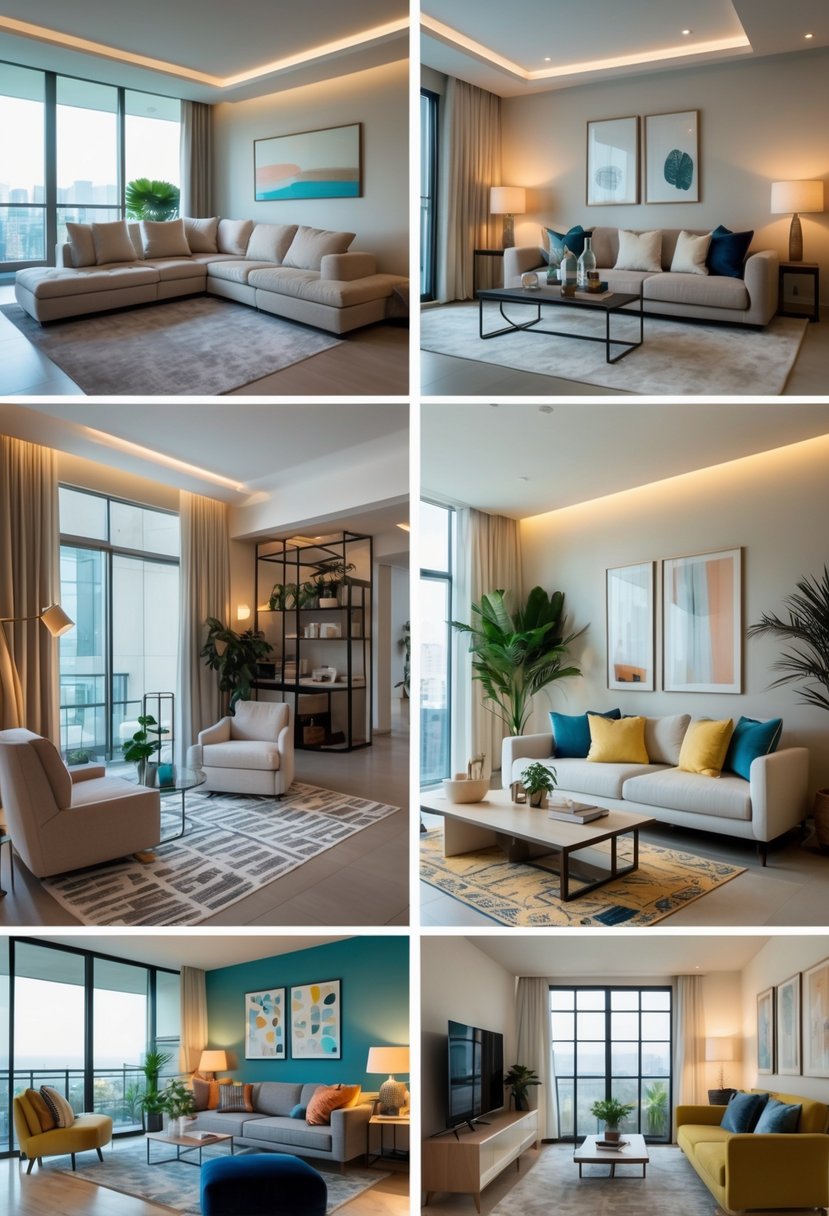
The key to successful apartment living room design is choosing layouts and decor that maximize space and enhance functionality. This article explores five different living room design ideas to help transform an apartment space effectively.
1) Use multifunctional furniture like storage ottomans or sofa beds
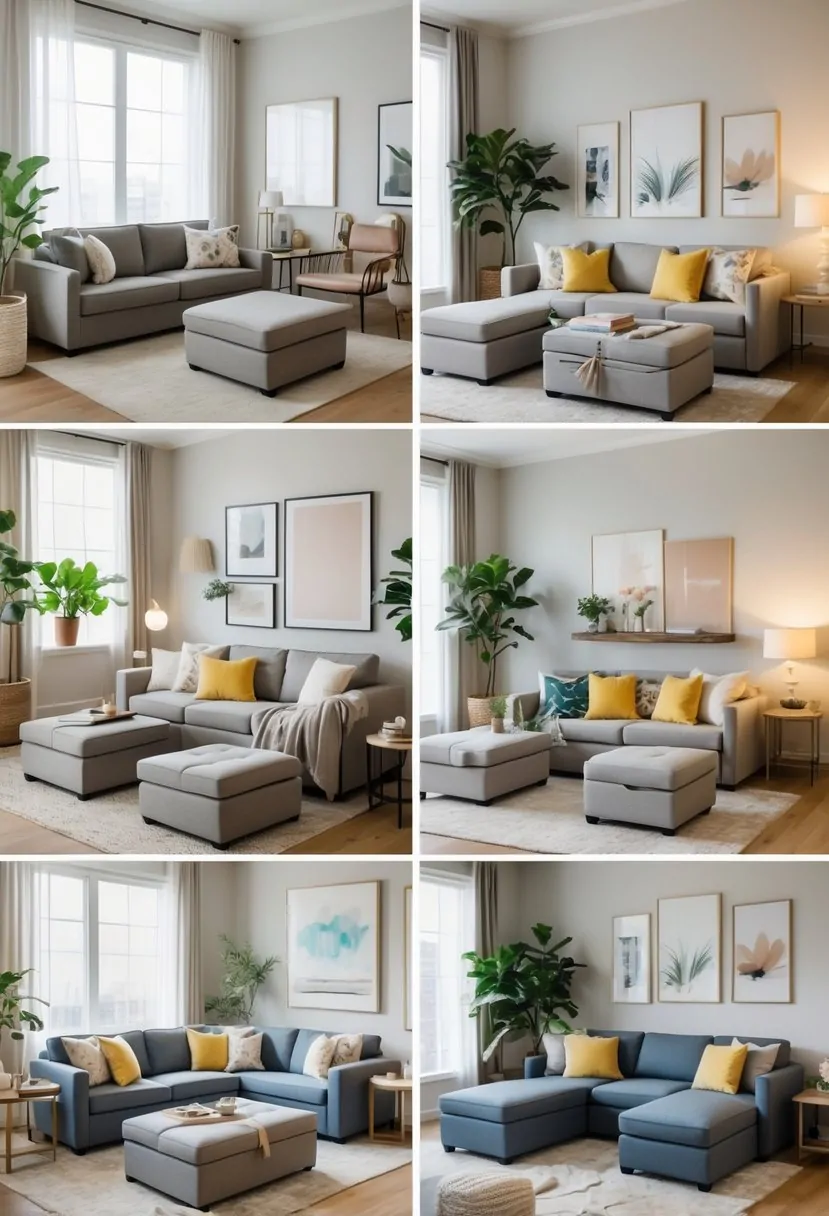
Multifunctional furniture helps save space in an apartment living room. Storage ottomans offer a place to sit and hide items inside, reducing clutter.
Sofa beds are useful for small spaces because they provide seating by day and a bed for guests at night. Both pieces make the room more practical without adding extra furniture.
2) Incorporate wall-mounted shelves to save floor space

Wall-mounted shelves free up floor space, making a room feel less crowded. They provide storage for books, decor, and personal items without taking up square footage.
Shelves can be installed at different heights to create an organized and attractive display. Corner shelves use often-unused spaces efficiently.
This design works well in small apartments by keeping surfaces clear while adding vertical storage. It also helps highlight artwork or photos without cluttering the room.
3) Choose a light, neutral color palette to enhance openness
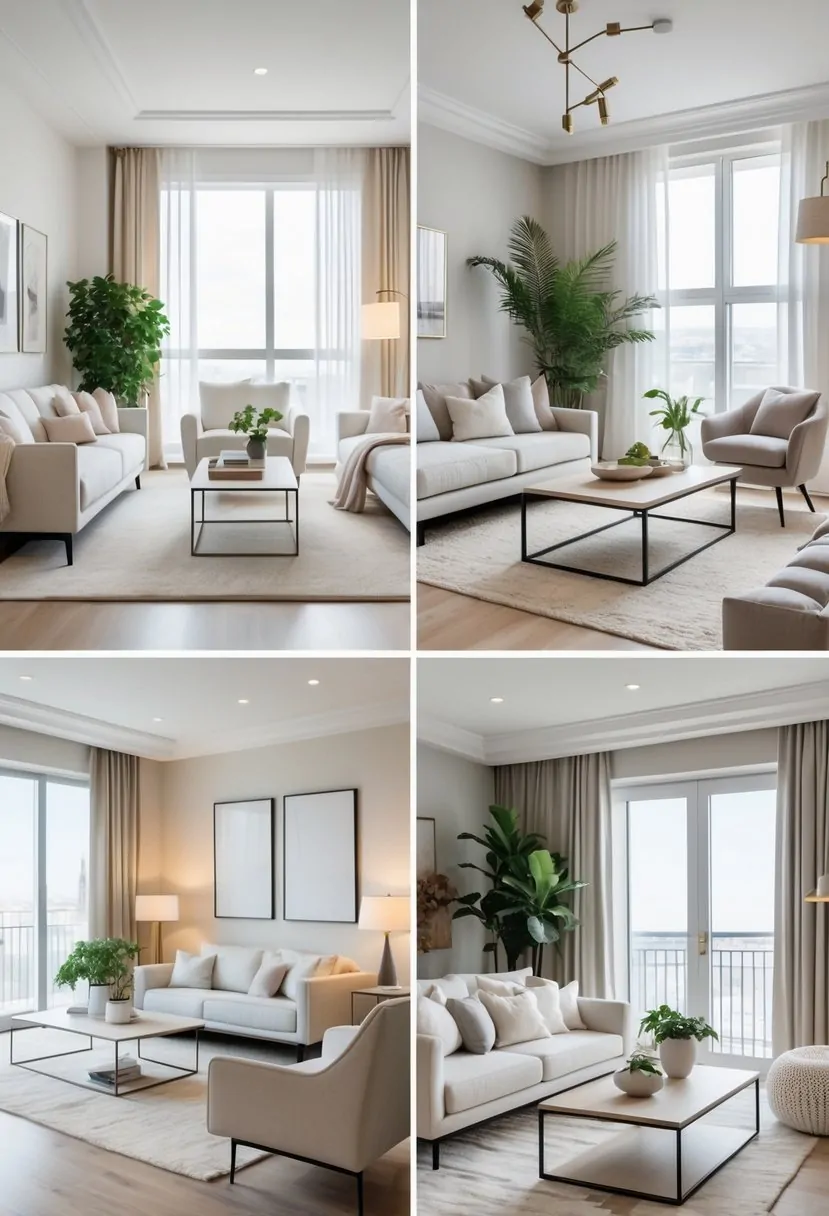
A light, neutral color palette helps make small apartments feel more open and spacious. Shades like white, beige, and soft cream reflect natural light, brightening the room.
Using varied tones of these colors on walls, furniture, and textiles adds depth without cluttering the space. Adding natural wood elements can warm up the room while keeping the calm atmosphere. This approach creates a balanced and inviting living area.
4) Create zones with rugs to define different living areas
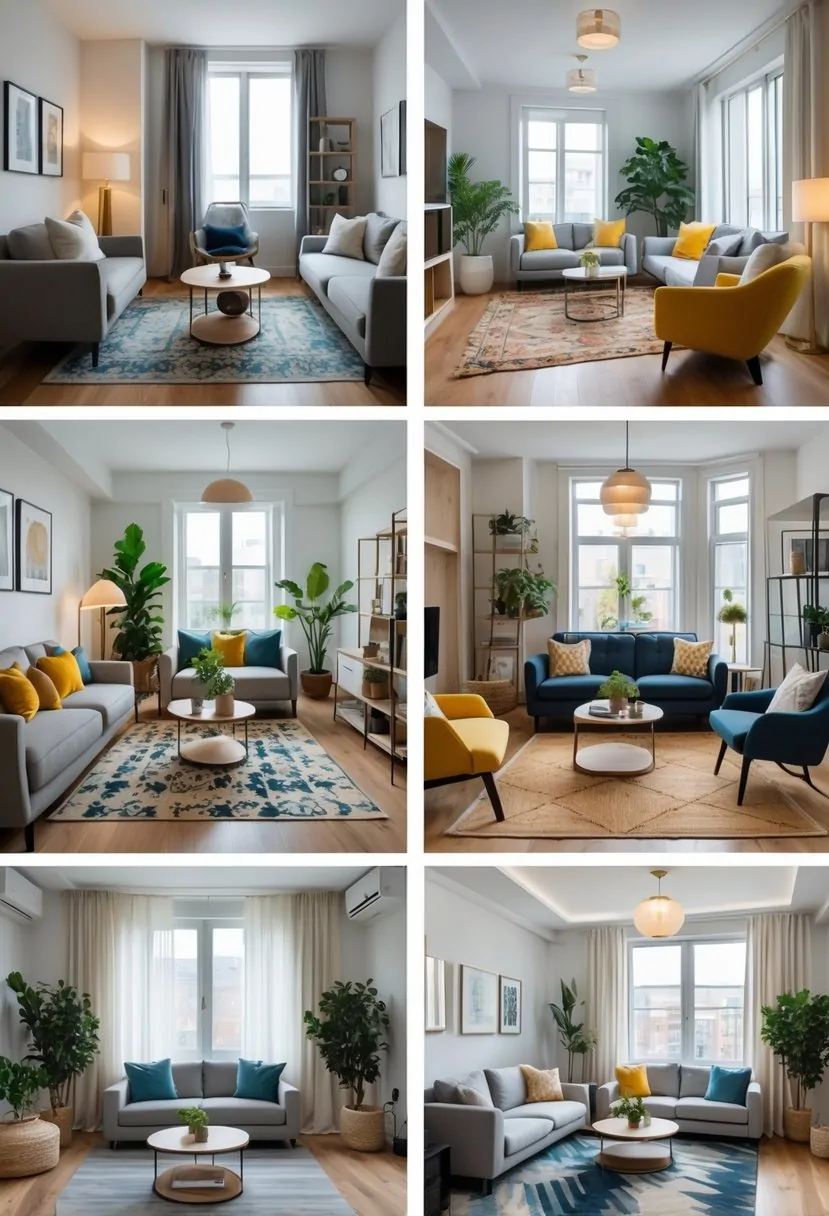
Using rugs to divide a living room helps separate activities without walls. It visually marks areas like seating or dining spaces clearly.
Choosing rugs with different colors, patterns, or shapes can make each zone stand out. This method adds both function and style.
Placement is key. Align rugs with furniture to create balanced, organized zones that improve room flow and usability.
5) Utilize mirrors to visually enlarge the room
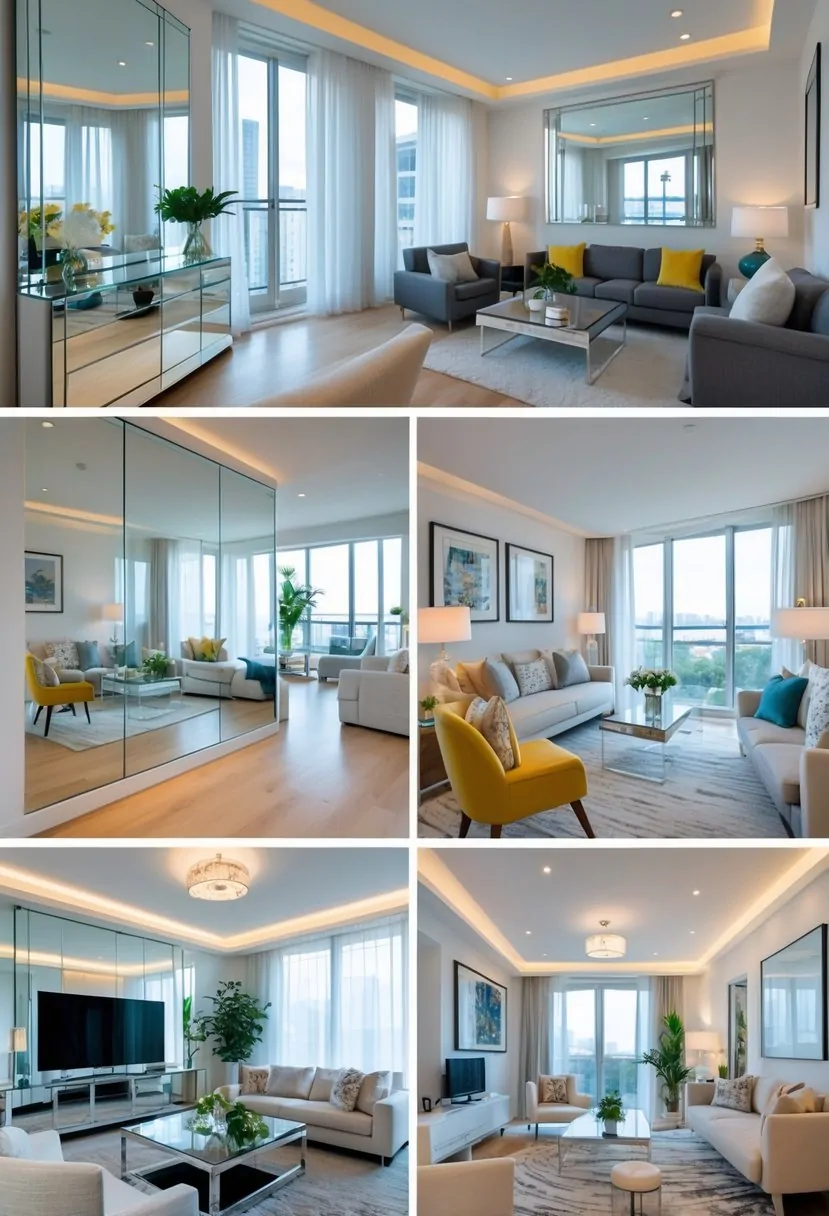
Mirrors reflect light and open up space, making a room feel larger. Placing a large mirror opposite a window helps brighten the room by bouncing natural light around.
Using mirrors on two adjacent walls can create multiple reflections. This adds depth and a sense of spaciousness in small apartments.
Choosing simple, oversized mirrors with minimal frames keeps the look clean and avoids clutter. Mixing mirror shapes can add style without shrinking the space visually.
6) Opt for slim-profile, scaled-down sofas and chairs
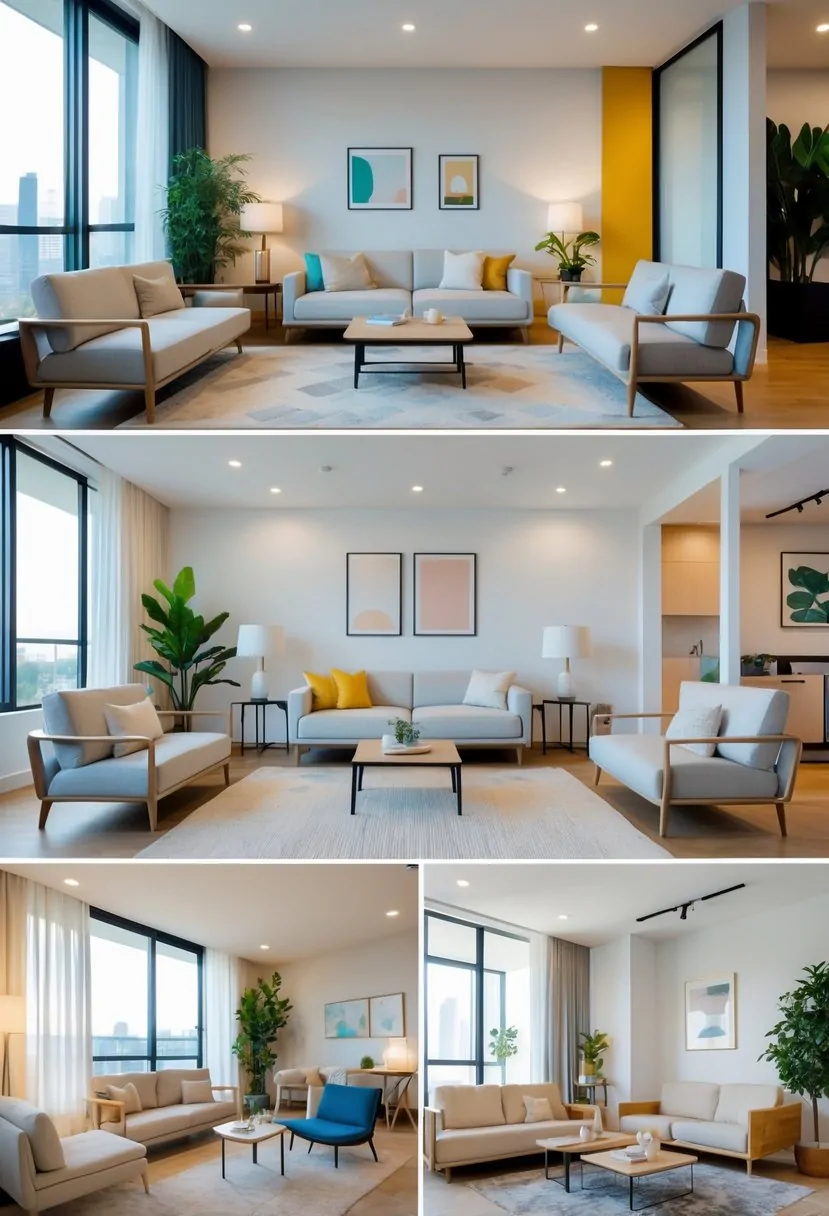
Choosing slim-profile sofas and chairs helps keep small living rooms from feeling crowded. These pieces have clean lines and a compact design that fit well in tight spaces.
Scaled-down furniture is better balanced for apartments, avoiding bulky shapes that overwhelm a room.
Small sofas or loveseats, along with armless chairs, save space while still providing comfort. This approach makes the room look more open and organized.
7) Maximize natural light with minimalist window treatments

Minimalist window treatments help bring in more natural light while keeping the space simple. Sheer curtains or no curtains at all allow sunlight to flow freely into the room.
Using light fabrics and neutral colors prevents blocking light and makes the room feel more open.
Adjustable wood coverings offer a balance of privacy and light control without heavy designs. These choices enhance brightness without cluttering the living area.
Optimizing Small Spaces
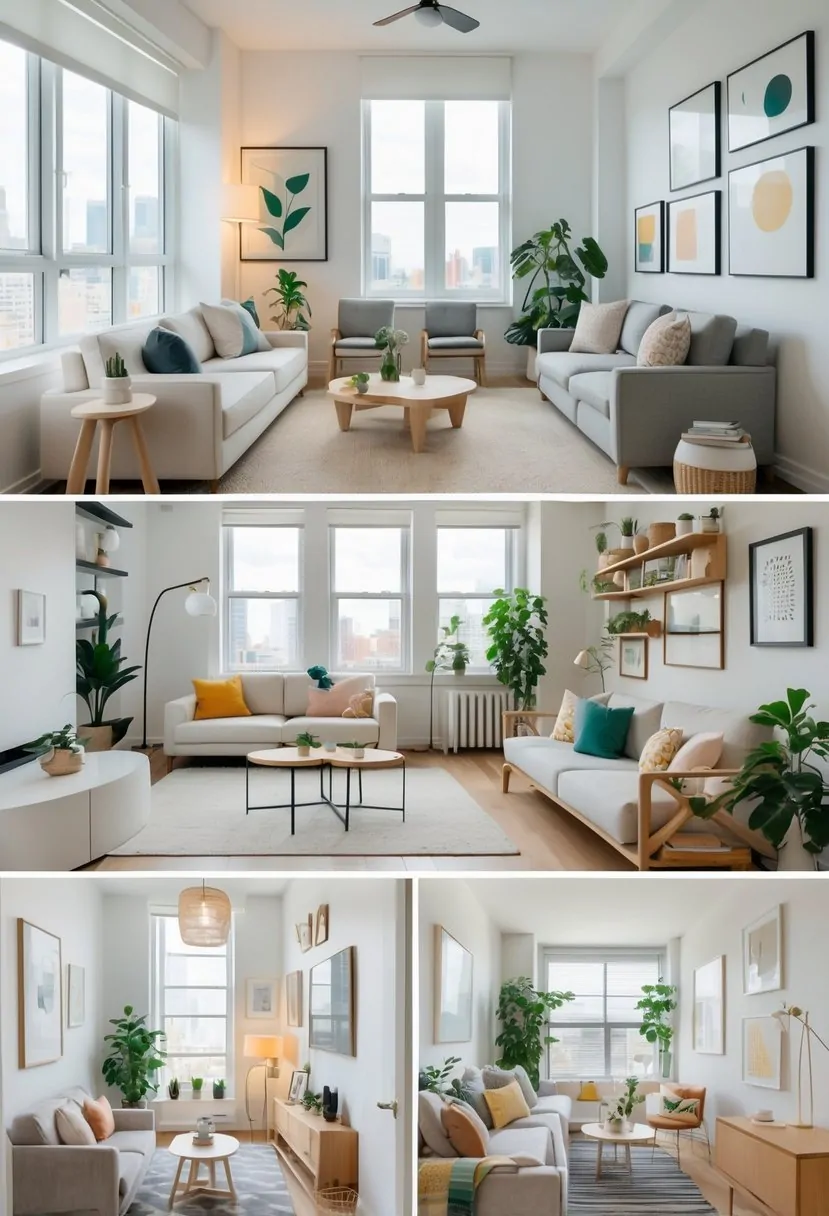
Making the most of a small living room means careful choices about furniture and lighting. Using pieces that serve more than one purpose helps save space, while good lighting can make the room feel larger and brighter.
Choosing Multi-Functional Furniture
Multi-functional furniture is essential in a small apartment living room. Pieces like a sofa bed or an ottoman with storage add extra utility without taking up more space. A coffee table that lifts to become a desk or dining table is also helpful.
Choosing furniture with built-in storage helps keep clutter out of sight. Stackable stools or nesting tables provide flexible seating and surface space when needed but can be tucked away afterward. Lightweight, movable furniture allows easy rearranging to fit different activities.
By focusing on multi-use furniture, the living room remains open and organized, which prevents the space from feeling cramped.
Maximizing Natural Light
Natural light can visually expand a small room. Using sheer or light-colored curtains lets in more sunlight while maintaining privacy. Placing mirrors opposite windows reflects light, making the room appear larger and brighter.
Wall colors also affect brightness. Light, neutral tones such as whites, creams, or light grays help bounce light around. Avoid heavy, dark drapes or bulky furniture near windows, which block light.
Keeping window areas clear and using furniture with low profiles near windows improves light flow. Properly used natural light reduces the need for multiple lamps, freeing up space for other uses.
Color Schemes and Decor Accents
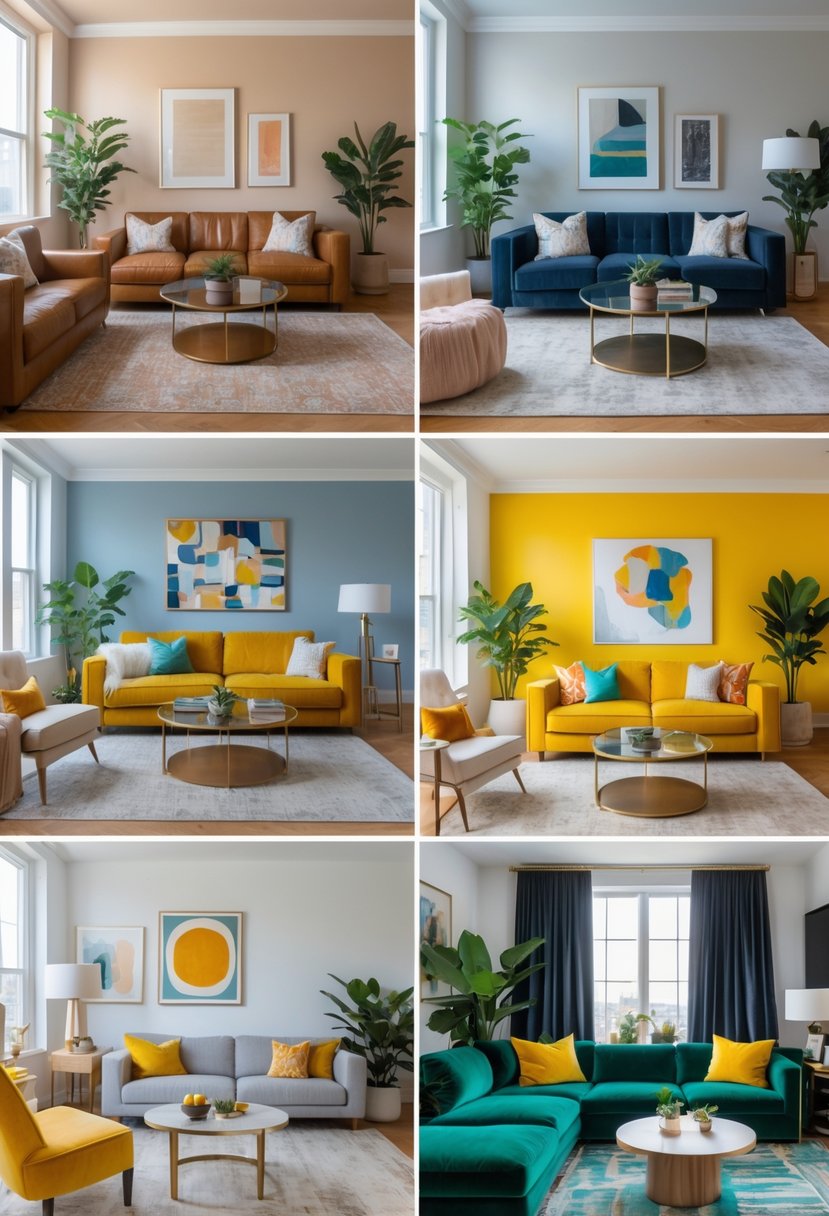
Choosing the right colors and accent pieces can make a small apartment living room look stylish and functional. Careful planning of storage and texture will enhance both the look and feel of the space.
Incorporating Smart Storage Solutions
Smart storage is essential in an apartment living room with limited space. Using furniture that doubles as storage, such as ottomans with hidden compartments or coffee tables with drawers, helps keep clutter out of sight.
Wall-mounted shelves save floor space while displaying decor or books. Vertical storage draws the eye upward, making the room feel taller. Baskets and decorative boxes add a neat look and store small items.
Choosing light-colored storage pieces keeps the room feeling open. Matching storage solutions to the overall color scheme creates a seamless design that doesn’t distract from the room’s style.
Balancing Texture and Contrast
Texture adds depth and interest to a small living room without crowding the space. Combining smooth surfaces like wooden tables with soft fabrics such as plush rugs or velvet cushions creates a balanced feel.
Using contrast in colors can highlight furniture and decor accents. For example, pairing a neutral cream sofa with deep emerald green pillows adds color without overwhelming the room.
Mix materials carefully. Metals, wood, and textiles should complement each other instead of clashing. A good balance keeps the space visually appealing and comfortable to use.
Frequently Asked Questions
Maximizing space and creating a stylish look are often top priorities. Using smart furniture choices and thoughtful decor can make a big difference in how an apartment living room feels and functions.
What are effective layout strategies for small apartment living rooms?
Using multifunctional furniture like storage ottomans or sofa beds helps save space and adds practicality. Wall-mounted shelves free up floor area and keep the room organized.
Defining areas with rugs can create clear zones, making the space feel larger. Placing mirrors strategically reflects light and visually expands the room.
How can one achieve a modern look in an apartment living room?
Choosing a light, neutral color palette opens the room and creates a clean, modern feel. Minimalist furniture with simple lines supports this look.
Incorporating sleek, wall-mounted storage keeps surfaces clear. Using a few well-chosen statement pieces adds interest without cluttering the space.

